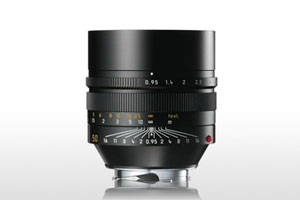The old argument that I have to spend heavily on good fast prime glass because I love to shoot in low light is dead. That’s a reasoning that dates back to film and early digital photography when you had to push that Ilford and early imaging sensors too achieve the best possible compromise between detail, noise and color/tonal accuracy. Who in today’s world with acceptable ISO reaching 12,800 cares about “to F1.4 or not.” But that doesn’t make good fast prime glass less important. Today you buy good glass for its “character” and unique rendition.

Well Leica is a bad example anyway. Because with the current M’s CCD sensor you’re really glad for every additional stop as noise is already disheartening around ISO 800 (for such an expensive camera). The new M (Type 240), however, promises betterment, so when you’ll be torn between say the 28mm Cron and Elmarit, I wouldn’t hesitate for a second to go for the Elmarit. If we’re talking importance of stops gained/lost only.
One stop gained or lost doesn’t really matter anymore in today’s digital imaging world. But there’s the very important, highly subjective “character issue”:
While the 28mm Cron has a somewhat weird, addicting bokeh shot wide open, the Elmarit is much more neutral and even, if not boring.
It goes without saying that you’re not buying a wide angle lens for it’s bokeh. This is just to prove the point that fast glass still matters even at wide angles. Not for speed, however, but more so for subjective rendition.
This subjectivity comes at a price. Especially in the world of Leica a stop gained or lost can easily mean a few thousand dollars spent or saved. So think rationally when you’re about to succumb to the temptation. But who can resist the characteristics of a 50mm Summilux, whatever built/generation.
Alright, the character of a lens is subjective. But it’s safe to say that a lot of engineering and quality material goes into fast expensive glass. Their color rendition and overall contrast and clarity is usually no match for cheaper glass. And it’s these characteristics that give a lens its character and that determine how a lens handles out-of-focus a.k.a. bokeh and achieves or achieves not a three-dimensional look.
Fast lenses’ quite often amazing performance is proof that a lens can’t solely be measured objectively. The subjective values are not less important.
You get what you pay for, as the old saying goes, but in today’s photography world we’ve reached a point with so many products that more expensive gear offers a diminishing marginal return on expenditure whereas cheaper, smaller gear offers an increased marginal return on expenditure.
The borders between maximum performance for exponential expenditure and good enough performance for reasonable expenditure diminish.
If you’re not after the “signature” of a lens then better don’t even bother about fast glass because most lenses start to look alike when stopped down.
I for myself don’t hesitate a second to pay a premium for character. But less so for speed.
And here’s an appeal to imaging software makers. We have filters for everything. But not a single one to give an image the character of a specific lens. Now there’s a market I’d be willing to pay for.


